Kitefin Shark
Dalatias licha
The kitefin shark is sporadically widespread and not uncommon in Scottish waters. It is a deep water species living to depths of around 1800 m, although some have been recorded in 37 m of water. This species can grow up to 1.4 m long and are easily identifiable by the lack of an anal fin and their dentition, particularly their lower teeth which resemble that of the cookiecutter shark (Isistius brasiliensis):
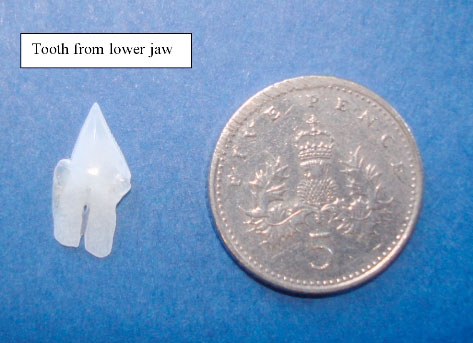
Kitefin shark dentition
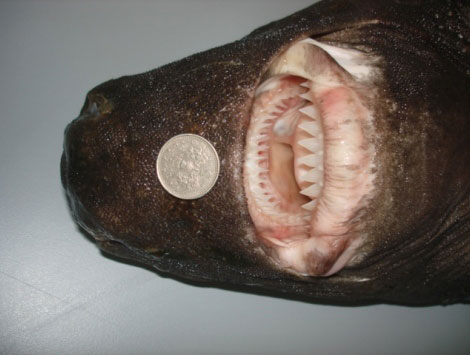
Kitefin shark lower teeth
Kitefin sharks are ovoviviparous (baby sharks grow and develop inside an egg which the mother keeps inside her until they are ready to be born) and give birth to between 10 and 16 young measuring about 30 cm in length. These sharks have a wide ranging diet which includes various fish species, cephalopods (squid and octopus), crustaceans (e.g. lobsters), and other shark species.
There is no current commercial interest in this species in Scotland; although a fishery was present in Portugal, targeting the liver oil of the shark, before it collapsed in the late 1990s.
Data sources
- The Shark Trust (www.sharktrust.org)
- Fishbase (www.fishbase.org)
- Compagno (1984)
The kitefin shark, caught by the Prolific, was a mature male of 1.2 m total length weighing 8.5 kg. The bi-lobed liver weighed 2.2 kg (26% of the body weight) and the stomach contents weighed 0.3 kg. Stomach contents consisted mostly of a yellow liquid but one large piece of fish, possibly hake (Merluccius merluccius), was also found.
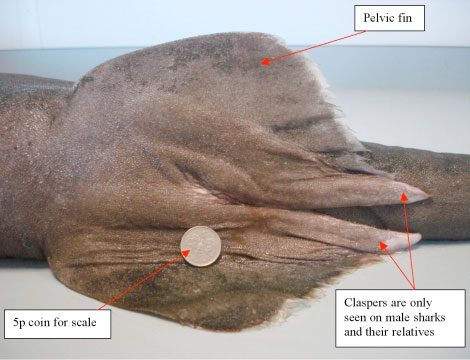
Kitefin shark mature male
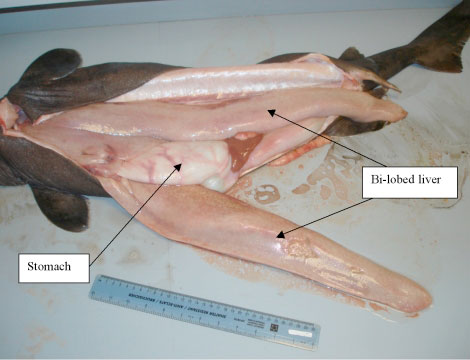
Kitefin shark bi-lobed liver
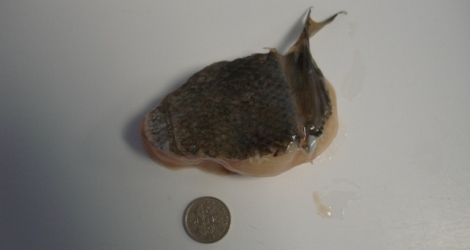
Kitefin shark stomach contents
View the Discovery Zone Map.